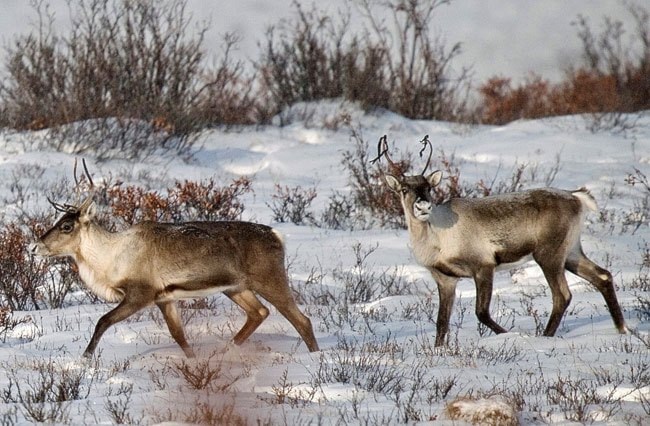Half of Canada’s boreal caribou may disappear unless their habitat is protected, warns a federal report released April 9.
“We’re pushing them into a space where they may no longer be able to sustain themselves,” said Fiona Schmiegelow, a researcher with the University of Calgary who led a team of 18 scientists to produce the report.
Some 36,000 boreal caribou are believed to dwell in herds scattered from Labrador to the northeast corner of the Yukon. Of the 57 herds found in this range, 29 have shrunk to sizes so small that they are no longer believed to be self-sustaining.
The animals’ range was once twice as large as it is today.
Habitat loss started with the conversion of forest to farmland. Today the boreal forest continues to be chopped away by forestry, mining, hydro projects and oil developments such as Alberta’s massive tarsands project.
It’s bad news for these reclusive creatures, which depend upon continuous stretches of mature coniferous forest to hide from predators.
“Their range is in order of many tens of thousands of square kilometres. These are not just little postage stamps on the map,” said Schmiegelow.
Critics have accused the Conservative government of trying to bury the report. It was released 10 months after it was completed by Schmiegelow’s team in June of 2008.
And the report was released on the afternoon of the Easter long weekend—a favourite time for governments to release bad news, in the hope that it will be forgotten over the holiday.
On top of this, Environment Canada tacked an anonymous preface onto the 254-page report which faults scientists for not specifying how much industrial development the caribou could tolerate.
Nevertheless, Aran O’Carroll with the Canadian Parks and Wilderness Society, which is campaigning to protect the boreal forest from future development, describes the report as “precedent-setting” and the most exhaustive of its kind to date.
The preface came as a disappointment and surprise to Schmiegelow, who stands by its science.
But she also worries that the substance of the report may be lost in the furor around its lukewarm reception by government.
“We can criticize the government for adding the preface, but I think we also need to commend them for putting the process in place that led to the report and made the report public. Because often we don’t get that far.”
Development and caribou can coincide—within limits, she said.
“It doesn’t mean we stop all activity. But it does mean that we’re much more careful about how they’re planned.”
Subtle changes to old-growth forest can have profound effects for caribou populations. Roads and cutlines open up caribou habitat to predators such as wolves.
Or if a forest is logged and regrows, the younger, deciduous trees that appear first tend to attract moose and deer, which in turn attract more predators. Caribou decline.
Then there’s Alberta’s oilsands development, which has dramatically turned a key piece of caribou habitat linking populations in Alberta, the Northwest Territories and Saskatchewan into an industrial wasteland.
Ottawa commissioned the report because boreal caribou are designated as “threatened” by Canada’s Species At Risk Act.
This means the species is likely to become endangered, and eventually extinct, unless corrective measures are taken to reverse the animals’ decline.
The report, which describes critical habitat for boreal caribou, will help create a recovery strategy. This strategy will be released in 2011, according to the government.
Before then, the government must, by law, consult affected aboriginal groups.
Nearly all of Yukon’s woodland caribou, of which there are about 30,000, are excluded in the study because they differ from their counterparts across Canada in one important respect: they migrate from mountainous forests in the winter to alpine tundra in the summer.
Boreal caribou have massive ranges, but are not considered a migratory species.
Also excluded from the report are barren ground caribou, such as those of the Porcupine herd.
The Gwitch’in herd of about 500 boreal caribou, which largely dwell in the NWT, is known to cross the border into the Yukon. Because there’s little development in the area, the herd is considered to be the most likely to survive. Only one other herd enjoys as high a survival rating. It dwells in the mountains of southern Labrador.
Yukon’s migratory woodland caribou are designated as “at risk” by the Species At Risk Act, which is one rung below “threatened.”
The report’s findings could be of value for ongoing work to develop a management plan for these Yukon caribou populations, said Schmiegelow.
And there’s a message for Yukon in the report, she said.
It’s to ensure that forestry and mining companies “apply state-of-the-art methodologies and techniques,” to ensure caribou habitat isn’t needlessly damaged.
Contact John Thompson at
johnt@yukon-news.com.
